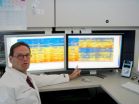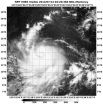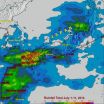(Press-News.org) Despite impressive medical strides, cancer remains a leading killer and overwhelming burden to healthcare systems, causing well over a half million fatalities per year with a projected cost of $174 billion by 2020, according to the National Cancer Institute. Reducing the human and economic toll will require diagnosis and intervention at early stages of illness, when the best prognosis for a cure exists.
In recent years, aggressive research and substantial financial investments have been directed at discovering pre-symptomatic indicators of cancer, known as biomarkers. But as lead author Phillip Stafford and his colleagues at Arizona State University's Biodesign Institute emphasize in a new study, the quest for cancer biomarkers has been stymied by a number of factors.
In research appearing in today's issue of the journal Proceedings of the National Academy of Science, Stafford and his team describe an innovative technique for early disease detection, which they call immunosignaturing.
"For years we've seen remarkable results from immunosignatures, but introducing the technology to the scientific community has required a lot of patience," Stafford says. Stafford is a researcher in Biodesign's Center for Innovations in Medicine which is co-directed by Stephen Albert Johnston, who is also one of the new study's co-authors.
To date, only a handful of cancer biomarkers have received FDA approval for clinical use and even approved biomarkers are sometimes of limited utility. The problems are numerous. The body's immune response to cancer is complex, heterogeneous and differs from patient to patient, as well as depending on depending on cancer type and stage.
Individual biomarkers often lack the sensitivity and resolution for positive diagnosis and diagnostic molecules, including RNA, DNA, proteins or peptides are often present in vanishingly slight amounts, after diluting in the bloodstream, making accurate detection especially challenging. Vast research efforts notwithstanding, efforts to establish better pre-symptomatic beacons of disease have been disappointing.
Immunosignatures take a different approach. Rather than using a reductionist biomarker paradigm, it relies on a multiplexed system in which the entire population of antibodies circulating in blood at a given time is profiled.
The technique relies on a microarray consisting of thousands of random sequence peptides, imprinted on a glass slide. (The peptides used are 20 unit amino acid chains, randomly composed.)
When a tiny droplet of blood, (less than a microliter is needed), is spread across the microarray, antibodies in the blood selectively bind with individual peptides, forming a portrait of immune activity—an immunosignature.
Because the peptide sequences are random and not related to any naturally occurring disease antigens, the authors refer to immunosignatures as "disease agnostic," which means that a single platform is potentially applicable to multiple disease types. This is a substantial improvement over highly specific bioassays that can only test for a single biomarker antibody, often with substantial misidentification or inadequate sensitivity.
The current study puts immunosignatures to the test, evaluating the technique's ability to identify multiple disease types. The team first "trained" the system to calibrate results and establish reference immunosignatures, using 20 samples each from five cancer patient cohorts, along with 20 non-cancer patients. Once reference immunosignatures were established, the technique was tested in blind evaluation of 120 independent samples covering the same diseases. The results demonstrate 95 percent accuracy.
To further assess the diagnostic power of immunosignaturing, over 1500 historical samples comprising 14 different diseases, including 12 cancers were tested. In this case, 75 percent of the samples were used in the training phase and the remaining 25 percent subjected to blind test.
Remarkably, an average diagnostic accuracy of over 98 percent was achieved, demonstrating the suitability of immunosignaturing for the simultaneous classification of multiple diseases.
Specifically, in one experimental trial, researchers were able to detect and distinguish a complex, heterogeneous disease—stage IV breast cancer, relative to 4 other cancers and healthy controls. In the second trial, 14 separate diseases were distinguished from one another as well as from healthy controls, through immunosignatures. Among the cancers tested were 3 different stages of breast cancer, 4 different brain cancers, 2 pancreatic diseases, ovarian cancer and 2 different blood cancers.
The study emphasizes the fact that incidence of cancer constitutes an unprecedented global challenge to healthcare infrastructure, particularly in the face aging populations. Early detection and treatment of cancer must be given highest priority in order to adequately address projected increases in cancer cases.
Immunoisignatures provide an attractive means of capturing disease complexity, offering a marked improvement in detection over traditional methods in which one-to-one molecular recognition events are measured and only one or a small number of analytes can be evaluated.
In addition to the problem of dilution of measurable analytes in conventional tests, the authors stress the considerable heterogeneity of cancer, which results in complexity at the molecular level that tends to evade characterization when only a few target analytes are evaluated.
The microarray chip used for the current study contains 10,000 imprinted peptides, of random sequence, which serve the role of artificial disease antigens used to poll the antibodies present in blood. The fact that the random sequence peptides are structurally unrelated to natural antigens allows the array to perform as a sort of all-purpose diagnostic, capable of producing an antibody profile or immunosignature, regardless of the underlying disease in question.
When a particular immunosignature is recorded, some of the antibody activity observed pertains to binding signals present in most individuals; some are unique to particular individuals. In the case of underlying disease however, a subset of binding signals will be the result of disease-related antigens common to most individuals with the same disease, making the results highly reproducible.
The presence of 10,000 peptides on each microarray chip allows for enhanced sensitivity, owing to the large number of different possible signals elicited. The technology is also highly flexible in terms of handling and processing. A dried sample of blood, collected on filter paper and mailed to a study facility can be used to generate an immunosignature, permitting frequent health monitoring at low cost.
Further, a significant improvement in immunosignaturing sensitivity and accuracy can be achieved through new chip technology. The group is currently developing a peptide imprinted with >100,000 peptides.
INFORMATION:
Written by Richard Harth
Science Writer: Biodesign Institute
richard.harth@asu.edu
Capturing cancer: A powerful new technique for early diagnosis
2014-07-14
ELSE PRESS RELEASES FROM THIS DATE:
Labs characterize carbon for batteries
2014-07-14
Lithium-ion batteries could benefit from a theoretical model created at Rice University and Lawrence Livermore National Laboratory that predicts how carbon components will perform.
The model is based on intrinsic characteristics of materials used as battery electrodes. These include limitations on quantum capacitance (the ability of the material to absorb charge) and the material's absolute Fermi level, which determines how many lithium ions may bond to the electrodes.
Subtle changes in the structure, chemistry and shape of an electrode will alter how strongly lithium ...
Study: Young women with sexy social media photos seen as less competent
2014-07-14
BEND, Ore. – Girls and young women who post sexy or revealing photos on social media sites such as Facebook are viewed by their female peers as less physically and socially attractive and less competent to perform tasks, a new study from Oregon State University indicates.
"This is a clear indictment of sexy social media photos," said researcher Elizabeth Daniels, an assistant professor of psychology who studies the effect of media on girls' body image. Daniels' findings are based on an experiment she conducted using a fictitious Facebook profile.
"There is so much ...
Penn researchers successfully alleviate pulmonary inflammation with targeted drug delivery
2014-07-14
(PHILADELPHIA) – Pulmonary inflammation can cause shallow breathing and the lungs to become brittle in patients who experience multiple blood transfusions, sepsis, lung surgery and acute lung trauma. This complication can leave patients on ventilators, which can further traumatize the lungs, and often results in a mortality rate of 30 to 40 percent. To date, no medication has been successful at preventing or mitigating the damage caused by lung inflammation. Now, a multidisciplinary research team led by David Eckmann, MD, PhD, Horatio C. Wood Professor of Anesthesiology ...
Babies born in Canada to immigrant mothers have lower risk of cerebral palsy: Study
2014-07-14
TORONTO, July 14, 2014—Babies born to mothers who immigrated to Ontario from other countries have significantly lower rates of cerebral palsy than those of Canadian-born mothers, especially those from the Caribbean and East Asia, new research has found.
"Predicting who is at highest risk of having a child with CP remains an international priority," said lead author Dr. Joel Ray, who notes that CP rates have not declined much over the last decade.
CP is the most common motor disability in childhood and appears by the age of four. The underlying injury to the brain with ...
Avoiding abuse: Empathy, realistic expectations key to raising a child with disabilities
2014-07-14
ST. LOUIS – Children with developmental disabilities are at higher risk for abuse and neglect from parents than children developing at a typical rate. So far, there was little evidence of specific parental behaviors that were associated with the risk, but a SLU study finds inappropriate expectations and lack of empathy play a significant role in triggering the risk.
Debra Zand, Ph.D., associate professor of pediatrics at Saint Louis University and the principal investigator of the project, conducted the study in a small group of parents in St. Louis with 67 participants. ...
Rethinking fish farming to offset its public health and environmental risks
2014-07-14
As government agencies recommend greater consumption of seafood for its health benefits, a new analysis led by researchers from the Johns Hopkins Center for a Livable Future urges medical and public health professionals to consider the environmental and health impact of seafood sourcing, particularly aquaculture, or the farming of fish, shellfish and crustaceans. The paper appears in the July 2014 issue of the Journal of Current Environmental Health Reports.
Nearly half of all seafood consumed around the world comes from fish farms. Increasing seafood consumption has ...
Expert collaboration is the key to sustainable fish and shellfish farming
2014-07-14
Getting more people to eat seafood because it's a healthier option will need careful planning to ensure that the expansion of the aquaculture sector does not pose a risk to the environment. Business leaders in the sector should not aim only for profits, but rather embrace the principles of the One Health model that sees the health of humans being interwoven with that of animals and the environment. The model brings together experts from various fields to develop sustainable operations that ensure adequate human nutrition, and healthy environments, say Juan Gormaz of the ...
Suomi NPP satellite sees Typhoon Rammasun approaching Philippines
2014-07-14
NASA-NOAA's Suomi NPP Satellite passed over Typhoon Rammasun early on July 14 and captured a visible image of the storm that showed large bands of thunderstorms wrapping into the center as it approached the central Philippines.
When NASA-NOAA's Suomi NPP satellite passed over Rammasun on July 14 at 04:20 UTC, the Visible Infrared Imaging Radiometer Suite (VIIRS) instrument aboard took a visible image of the storm. The VIIRS instrument showed large, thick bands of powerful thunderstorms wrapping into the low-level center of circulation. The largest band extended from the ...
MD Anderson researchers discover new route for ovarian cancer spread
2014-07-14
Circulating tumor cells spread ovarian cancer through the bloodstream, homing in on a sheath of abdominal fatty tissue where it can grow and metastasize to other organs, scientists at The University of Texas MD Anderson Cancer Center report in Cancer Cell.
"This completely new way of thinking about ovarian cancer metastasis provides new potential avenues to predict and prevent recurrence or metastasis," said senior author Anil Sood, M.D., professor of Gynecologic Oncology and Reproductive Medicine and Cancer Biology.
The researchers found the circulating tumor cells ...
NASA adds up Tropical Storm Neoguri's deluge from space
2014-07-14
The once-powerful Super Typhoon Neoguri weakened to a tropical storm when it dropped heavy rainfall over southern Japan during the week of July 7, 2014. NASA and the Japan Aerospace Exploration Agency's Tropical Rainfall Measuring Mission or TRMM satellite measured that soaking from its orbit in space and data was used to create a maps showing the rainfall totals.
Heavy rainfall from Neoguri fell on land that was already soaked earlier this month by a slow moving seasonal frontal system. Neoguri was reported to have caused up to five deaths and 50 injuries in Japan.
Rainfall ...







